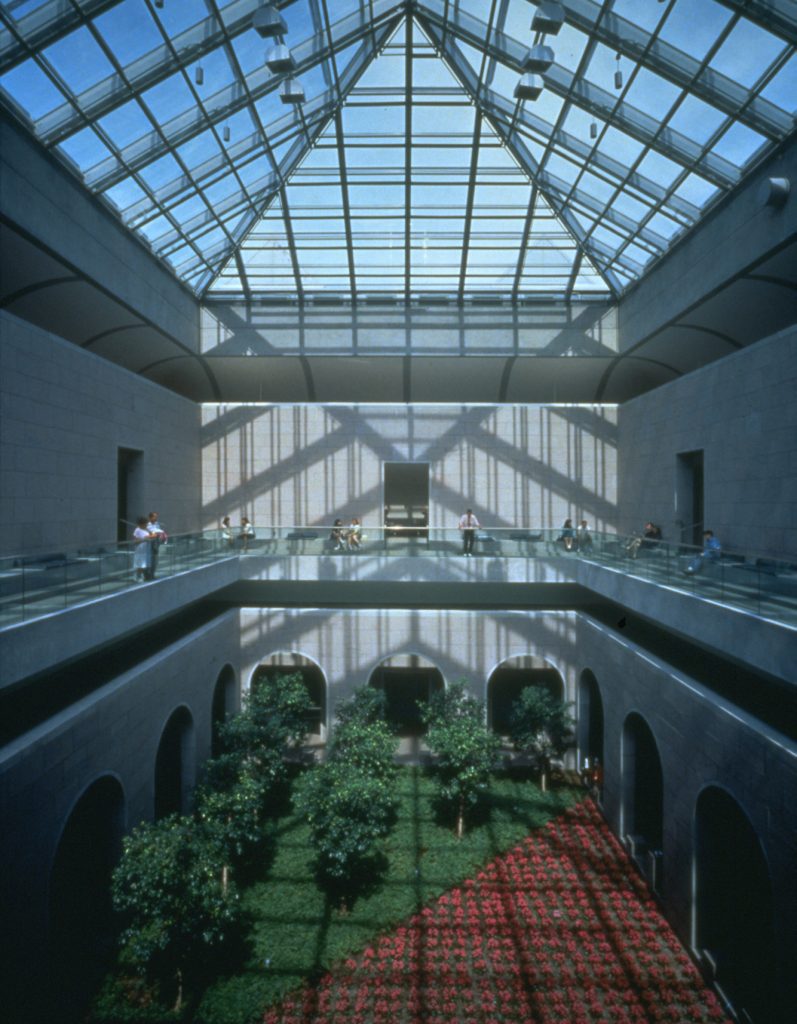Garden inspired by Canadian landscape to open at NGC
By Karen-Luz Sison
Visitors to the National Gallery of Canada will soon be able to experience a bit of the Canadian landscape in the downtown art palace, thanks to a new indoor garden court being unveiled to the public later this month.
Located in the Canadian and Indigenous galleries, the newly-named Fred and Elizabeth Fountain Garden Court has been redesigned by Cornelia Hahn Oberlander, the renowned landscape architect who also created the original garden space.
The 96-year-old, German-born Oberlander, who in December was named to the Order of Canada “as a worldwide leader in promoting socially conscious and environmentally responsible landscape designs,” said it was time for a change at the indoor NGC garden nearly 30 years after the gallery’s 1989 opening with her original design.
Oberlander said her inspiration for the new design was a re-imagining of the Niagara Escarpment and the Canadian Shield before European settlers came to Canada.
“I had to re-think what the escarpment was,” Oberlander said. “It’s a whole new inspiration, and the old courtyard with the ficus trees and the ground cover was no longer valid. You know, after 25 years, things might have to change.”
“I always bring a new inspiration to every job,” she said. “I never repeat myself.”
Having a garden in the middle of the art museum offers a special experience for the public, said Anne Eschapasse, the NGC’s deputy director of exhibitions and outreach.
“I hope they will embrace this garden and make it theirs and enjoy a moment in this space,” she said.
Bryce Gauthier, the principal landscape architect who headed construction of Oberlander’s design, has worked with Oberlander on about a dozen other projects. According to Gauthier, the main challenge of this project was finding plants that were reminiscent of Canadian greenery but could survive in a controlled, indoor climate, since Canadian plants are typically adapted to changing seasons.
“There’s a limitation with designing an exterior landscape when that’s your muse and trying to execute that inside a building,” he said.
Gauthier said the core features of the new design are the raised topography, a “river bed” running through the garden, and large stones referencing the geology of the Canadian Shield.
“If a visitor can come in and have that experience and not feel like they’re in an alien landscape, but a landscape of Canada in the middle of the gallery that’s dedicated to Canadian art, we’ve done our job,” Gauthier said.
He describes the garden as “an undulating landscape with a river valley in the middle.”
“[Oberlander] wanted to bring some of the Canadian landscape into the galleries, which is a fitting reference because we are at the heart of the Canadian and Indigenous galleries,” noted Eschapasse.
Overall, both Oberlander and Gauthier say the garden is meant to be a space of relaxation and contemplation amidst the world-class art housed by the gallery.
“We’re trying to bring about a feeling of calm, of repose,” Gauthier said. “And that’s done by a fairly restrained palette of materials. It’s mostly just green. Green is a predominant colour, and that’s also a limitation of the tropical plants. You can’t get the seasonal change of the Niagara Escarpment unfortunately, but the green helps. It’s a calming colour.”
“It is a beautiful garden which people can enjoy away from their busy lives,” Oberlander said. “We dreamt about the escarpment. And the public will appreciate that it is very green. They will just like the greenery and the flowers.”
The public unveiling of the garden court will be held on March 29. The official re-opening of the space will be followed by a concert featuring “Canada’s rising classical-music star” Bryan Cheng, who is scheduled to perform a selection of Johann Sebastian Bach’s solo cello suites.
The concert, now sold out, is billed as a “rare opportunity to enjoy some of the most glorious music ever written, in the sublime setting” of the gallery’s redesigned garden court.

